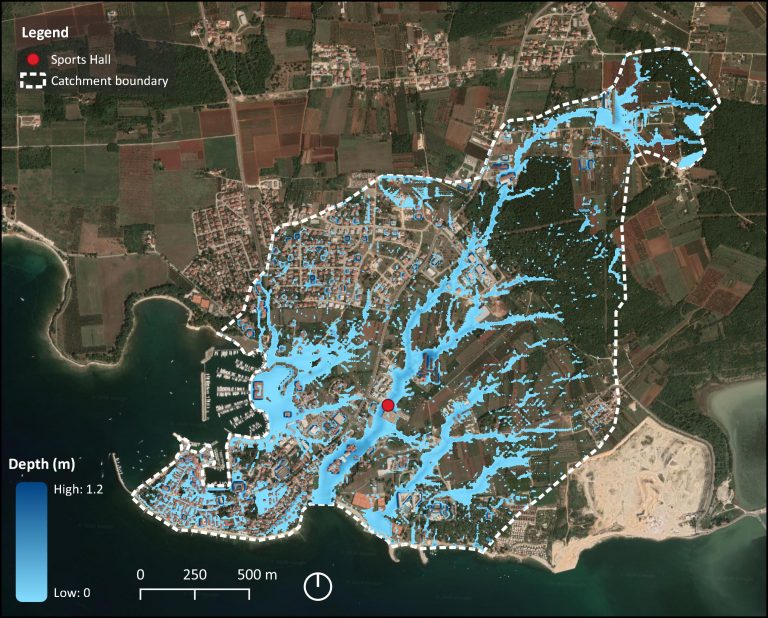
This study investigates and compares several design storms for flood estimation in partially urbanized catchments. Six different design storms were considered: Euler II, Alternating Block Method, Average Variability Method, Huff’s curves, and uniform rainfall. Additionally, two extreme historical storms have been included for comparison. A small, ungauged, partially urbanized catchment in Novigrad (Croatia) was chosen as a study area to account for the infiltration impact on the rainfall-runoff process. The performance of each design storm was assessed based on the flood modelling results, namely the water depth, water velocity, flow rate, and overall flood extent. Also, several rainfall durations were considered to identify a critical scenario. The excess rainfall was computed using the Soil Conservation Service’s Curve Number method, and two-dimensional flooding simulations were performed by the HEC-RAS model. The results confirmed that the choice of the design storm and the rainfall duration have a significant impact on the flood modelling results. Overall, design storms constructed only from IDF curves overestimated flooding in comparison to historical events, whereas design storms derived from the analysis of observed temporal patterns matched or slightly underestimated the flooding results. Of the six considered design storms, the Average Variability Method showed the closest agreement with historical storms.